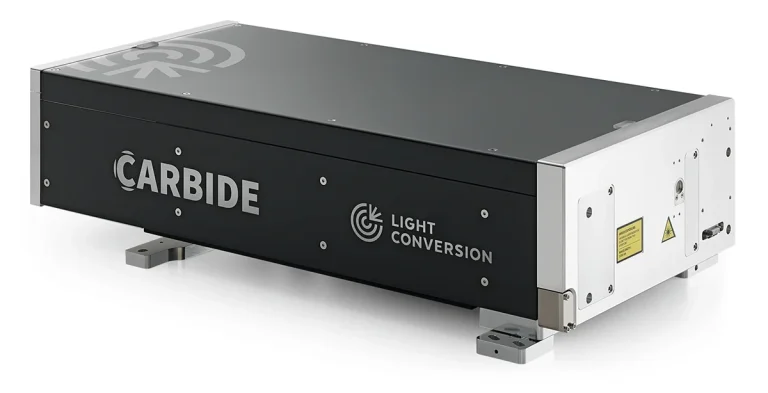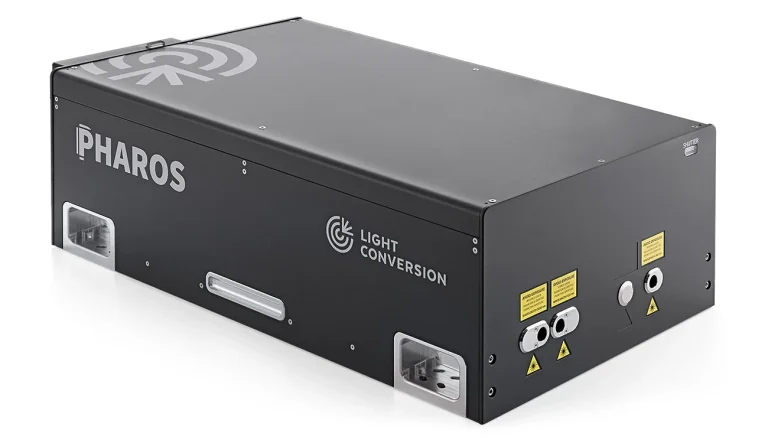太赫兹发生器
太赫兹(THz)产生 —— 即产生太赫兹频率范围的电磁辐射 —— 被广泛用于研究固体和液体中集体运动的动力学,或对光学不透明样品进行成像。后者在安全和国防领域正受到极大关注。
飞秒激光器是产生 1–30 太赫兹脉冲的理想工具,能够在可观的能量水平下获得所需的光谱带宽和脉冲持续时间。目前有多种基于激光的太赫兹产生技术,其中最常见的一种是光整流。这是一种二阶非线性光学过程,是差频产生(DFG)的特殊情况,可描述为脉冲内差频产生:激光脉冲中具有不同角频率的光谱成分在非线性晶体中混合,从而产生太赫兹范围内的新光谱成分。
此外,太赫兹脉冲还可通过激光激发光电导天线或半导体表面产生。其中最引人关注的技术之一是基于等离子体的太赫兹产生。特别是利用空气或气体等离子体产生太赫兹具有显著优势:与非线性晶体和其他体材料不同,气体不存在损伤阈值,且可不断再生,因此能够在极高强度下被泵浦。
紧凑型且性价比高的 CARBIDE 和 PHAROS 飞秒激光器具有市场领先的输出参数和坚固的设计,对工业和科研用户均具有吸引力。其激光输出可压缩至 10 fs以下,能够高效产生太赫兹辐射。
相关期刊
30 Years of Experience: Laser Systems for Efficient THz Generation
R. Budriūnas, O. Pronin, I. Abromavičius, V. Maslinskas, and T. Stanislauskas
Laser Congress 2024 (ASSL, LAC, LS&C) • 2024
Flexible generation of structured terahertz fields via programmable exchange-biased spintronic emitters
S. Wang, W. Qin, T. Guan, J. Liu, Q. Cai et al.
eLight • 2024
Rotating spintronic terahertz emitter optimized for microjoule pump-pulse energies and megahertz repetition rates
A. Vaitsi, V. Sleziona, L. E. P. López, Y. Behovits, F. Schulz et al.
Applied Physics Letters • 2024
Ultrafast atomic-scale scanning tunnelling spectroscopy of a single vacancy in a monolayer crystal
C. Roelcke, L. Z. Kastner, M. Graml, A. Biereder, J. Wilhelm et al.
Nature Photonics • 2024
Broadband, high power THz source at 540 kHz using organic crystal BNA
S. Mansourzadeh, T. Vogel, A. Omar, M. Shalaby, M. Cinchetti et al.
APL Photonics • 2023
1.3% conversion efficiency terahertz source based on lithium niobate pumped by sub-millijoule ytterbium laser
L. Guiramand, J. E. Nkeck, X. Ropagnol, T. Ozaki, and F. Blanchard
Optica Publishing Group • 2022
Chocolate Sample Classification by Principal Component Analysis of Preprocessed Terahertz Transmission Spectra
M. A. Khodasevich, A. V. Lyakhnovich, and H. Eriklioglu
Journal of Applied Spectroscopy • 2022
Near-optimal intense and powerful terahertz source by optical rectification in lithium niobate crystal
L. Guiramand, J. E. Nkeck, X. Ropagnol, T. Ozaki, and F. Blanchard
Photonics Research • 2022
Classification of Analgesic Drugs in Primary Packaging by Applying Multivariate Methods to Terahertz Spectra
A. V. Lyakhnovich, G. V. Sinitsyn, M. A. Khodasevich, and D. A. Borisevich
Journal of Applied Spectroscopy • 2021
Lightwave-driven scanning tunnelling spectroscopy of atomically precise graphene nanoribbons
S. E. Ammerman, V. Jelic, Y. Wei, V. N. Breslin, M. Hassan et al.
Nature Communications • 2021
太赫兹发生器
相关期刊
相关产品
太赫兹发生器

